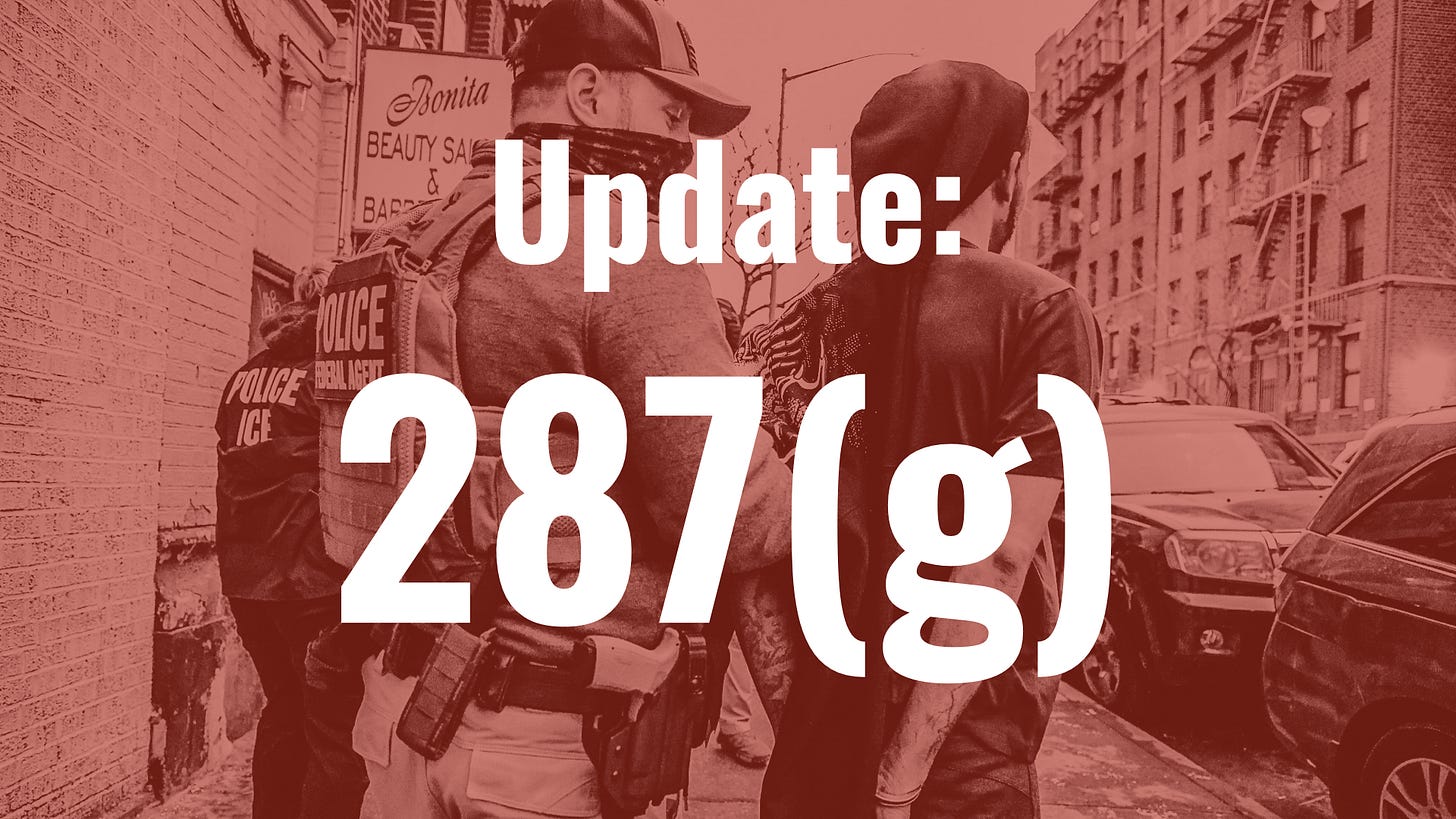ICE's 287(g) Enforcement Program Reaches 1,000 Active Agreements Across 40 States
New data reveals massive growth in the 287(g) program under the Trump administration, a 7.5x increase since January. Half are the most aggressive Task Force Model MOAs.
ICE’s latest data on 287(g), a program that delegates immigration enforcement authority to non-federal agencies, continues to show massive growth during the Trump administration. As of September 11, 2025, exactly 1,000 287(g) Memoranda of Agreement (MOAs) were in effect across the country, encompassing a total of about 775 separate agencies (agencies can sign more than one agreement.
In January, before the Trump administration, just 135 agreements were in place. The current total is now 7.5x what it was at the start of the administration. The largest growth comes from the most aggressive and controversial type of 287(g) agreement, the Task Force Model of 287(g), which has expanded to 500 jurisdictions—fully half of all MOAs. ICE currently lists another 12 jurisdictions as pending.
The recent surge in 287(g) agreements was driven by mass signings on August 28 (62 new MOAs signed on one day) and September 9 (another 44 signed on one day).
The map below shows the total number of MOAs by state. At least one agreement exists in 40 states, with ten states absent from any participation in ICE’s enforcement program (California, Connecticut, Delaware, Hawaii, Illinois, New Jersey, Oregon, Rhode Island, Vermont, Washington).
Florida continues to lead the way with the largest number of MOAs at 325, or about one-third of the national total. Texas has 166, or 15 percent of the total. No other state comes close to these two states, but Pennsylvania, Georgia, Virginia, Tennessee, and South Carolina all have over 30.
The expansion of 287(g) agreements coincides with a similarly dramatic rise in ICE arrests across the country in the past few months and record detention numbers—now over 61,000. We shouldn’t assume a causal relationship here; instead, the two trends are part of the larger push for arrests, detentions, and deportations across the country using a variety of overlapping and complementary strategies.
About 287(g)
287(g) is a controversial immigration enforcement program that allows local law enforcement agencies to participate in federal immigration enforcement activities. The program is controversial due to concerns about the potential for civil rights violations, the fact that the program cuts into local budgets, and may erode trust between communities and cops. In many localities, participation in 287(g) has prompted public protests. Nevertheless, since 9/11, 287(g) has served as a “tip of the spear” program during times of heightened immigration enforcement, such as during the first Obama administration and now.
To learn more about the types of 287(g) agreements, read my previous post, listen to my conversation with Jessica Pishko about the role of sheriffs in 287(g), and see my research with Mat Coleman on racial profiling and immigration enforcement in 287(g) jurisdictions.
Join me in celebrating over 10,000 subscribers and over 300 Substack posts. This newsletter is only possible because of your support. If you believe in keeping this work free and open to the public, join the 100% of surveyed paid subscribers who said this newsletter is a good steward of their investment. You can read more about the mission and focus of this newsletter and learn why, after three years, I finally decided to offer a paid option.




I saw this increase coming, but I'm not happy about it. We keep going backwards in this country.